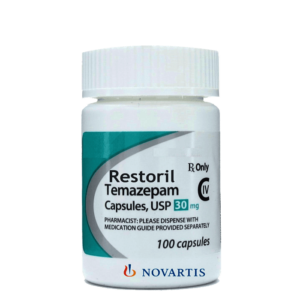Understanding Codeine in the USA
Overview of Codeine in the USA
Codeine is an opioid pain reliever that is frequently used in the USA to alleviate mild to moderately severe pain in also acts as a cough suppressant. Beyond its primary role in pain management, codeine also acts as a cough suppressant. It has some off-label applications, including the treatment of mild to moderate depression and diarrhea.
Forms and Combinations
In the USA, codeine is available in both immediate-release (IR) and extended-release (XR) formulations. It is often prescribed in combination with other medications, such as ibuprofen, aspirin, and acetaminophen. While codeine is generally regarded as safe and effective, it is essential to obtain it from legitimate and reputable sources.
Mechanism of Action
Codeine functions as an analgesic by binding to specific opioid receptors in the brain, which helps to diminish the perception of pain in the USA. This binding not only decreases the pain response but may also produce a mild sedative effect, providing some relief from anxiety.
Warnings and Precautions
Before taking codeine, it is important to acknowledge certain contraindications. Individuals with severe respiratory issues, intestinal blockages, frequent hyperventilation, or a history of asthma should avoid this medication due to the potential for sedation and adverse effects on respiratory function.
Codeine is not recommended for individuals under 18 years of age, and pregnant women should avoid its use to prevent withdrawal symptoms in the developing fetus in the USA. Additionally, combining codeine with alcohol can heighten the risk of adverse reactions. Those with known allergies to it and individuals with specific medical conditions, such as sleep apnea, liver or kidney disease, head injuries, or a history of substance abuse, should consult healthcare providers before use.
Administration Guidelines
Codeine should be taken strictly according to a healthcare professional’s prescription in the USA. Adhering to the advised dosage is critical, as exceeding the recommended amount can lead to serious complications, such as respiratory distress. If the medication seems less effective for pain relief, patients are encouraged to discuss this with their pharmacist.
As it has the potential for addiction, sharing medications is strongly discouraged, and misuse can result in dependency, overdose, or even fatality, particularly among children and those without a valid prescription.
Conclusion
Codeine is an effective option for managing pain in the USA, suitable for various conditions. For additional information or to purchase this medication, it is advisable to seek out licensed pharmacies that guarantee the authenticity and affordability of medications.
Possible Side Effects
Codeine use may lead to various side effects, including nausea, bowel disruptions, breathlessness, fatigue, and excessive sweating in the USA. Severe side effects, such as fainting or seizures, require immediate medical attention. Codeine is metabolized into morphine within the body, and the rates of this conversion can vary, potentially increasing the risk of complications. Prompt medical care should be sought if symptoms such as shallow breathing, extreme sedation, or confusion occur.
Drug Interactions
Codeine can interact with a range of other medications in the USA. Notable interacting substances include mixed opioid agonist-antagonists, such as butorphanol and nalbuphine, as well as semi-synthetic opioids. Consultation with a physician or pharmacist is recommended for individuals taking other medications, especially opioids, alcohol, cannabis, sleep aids, or antihistamines.
Ensuring the safe acquisition of it and other medications from reputable sources is crucial for maintaining quality and safety.




